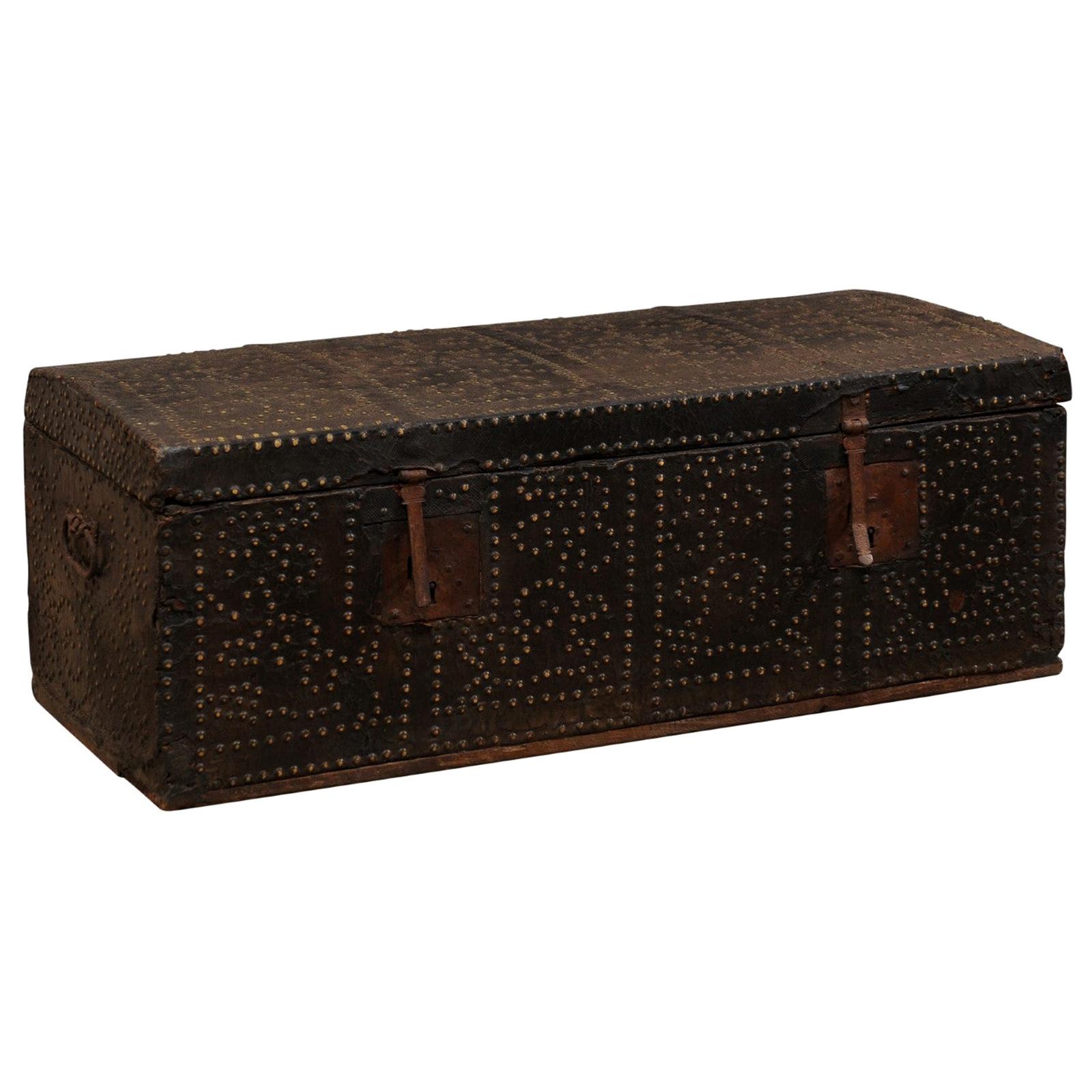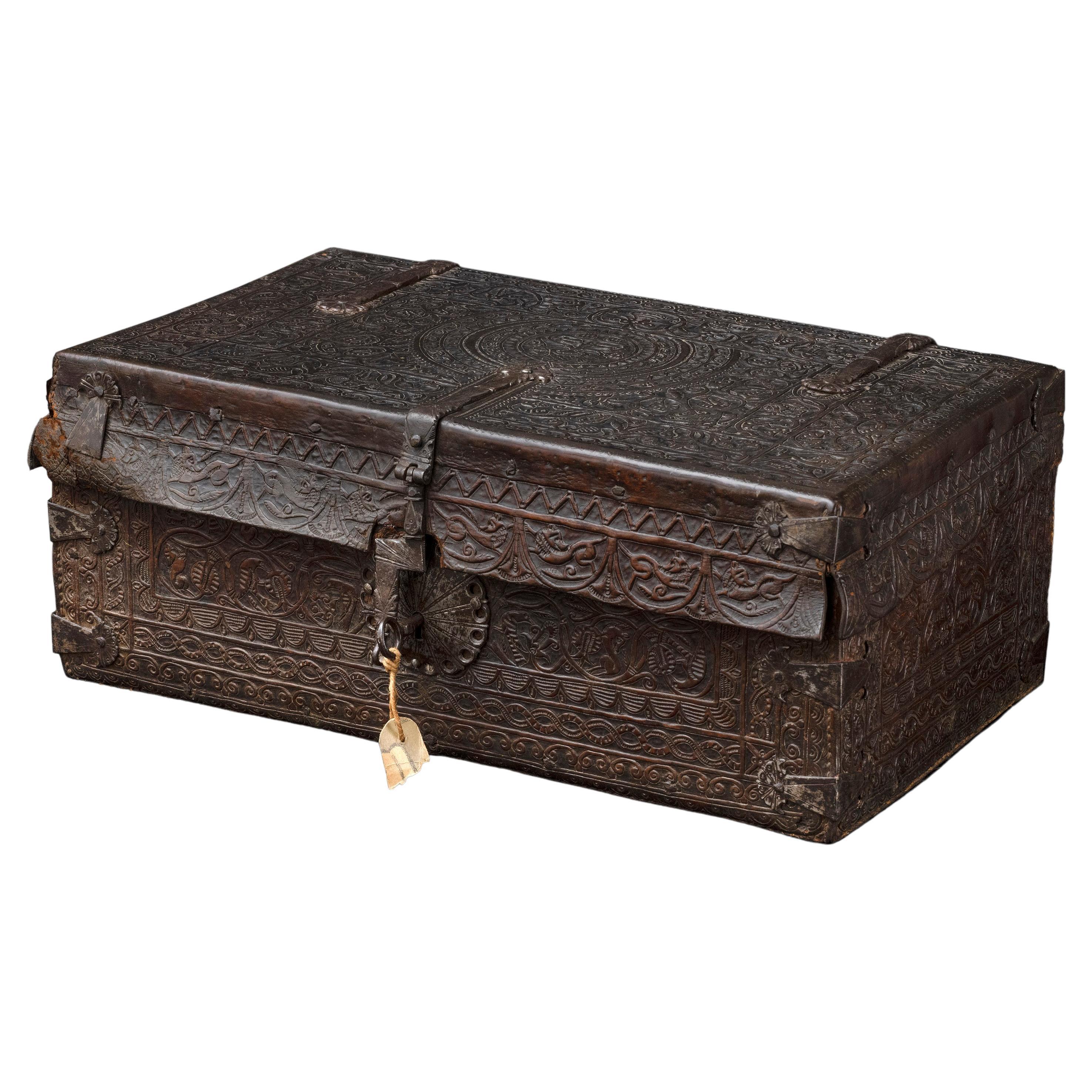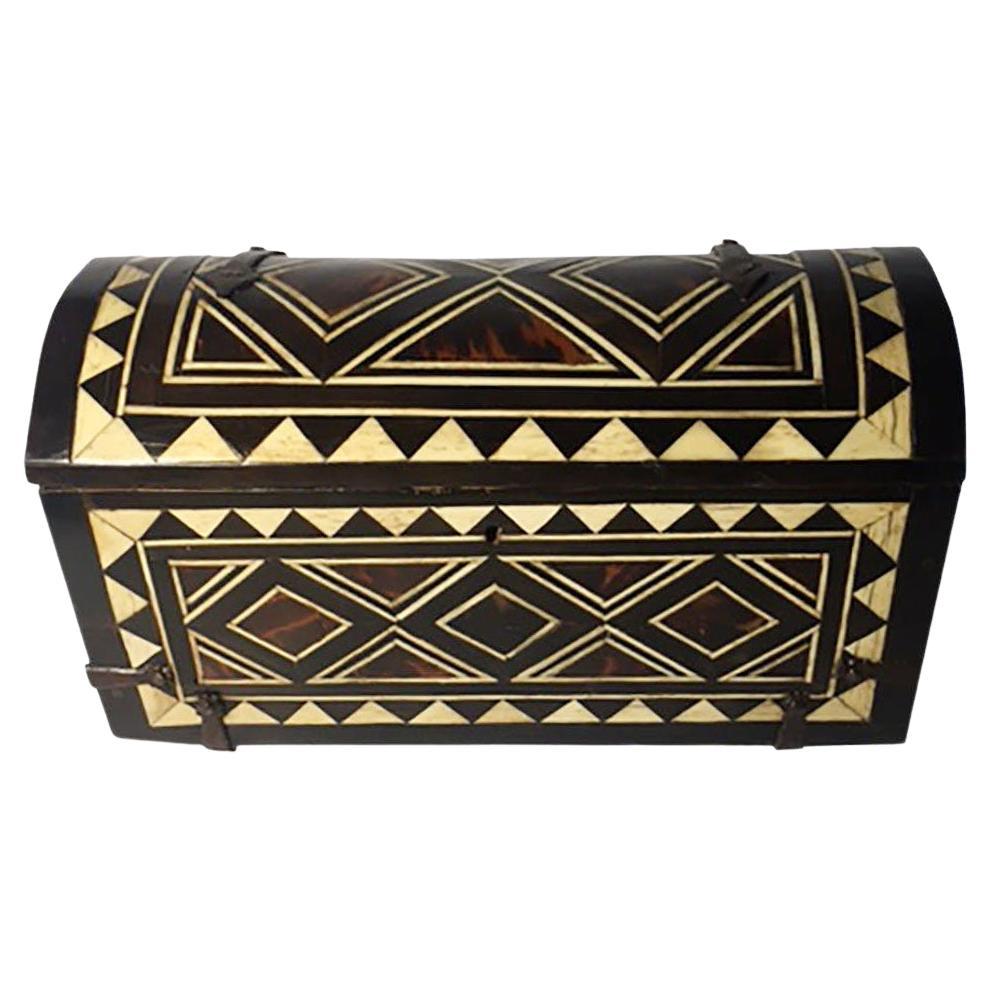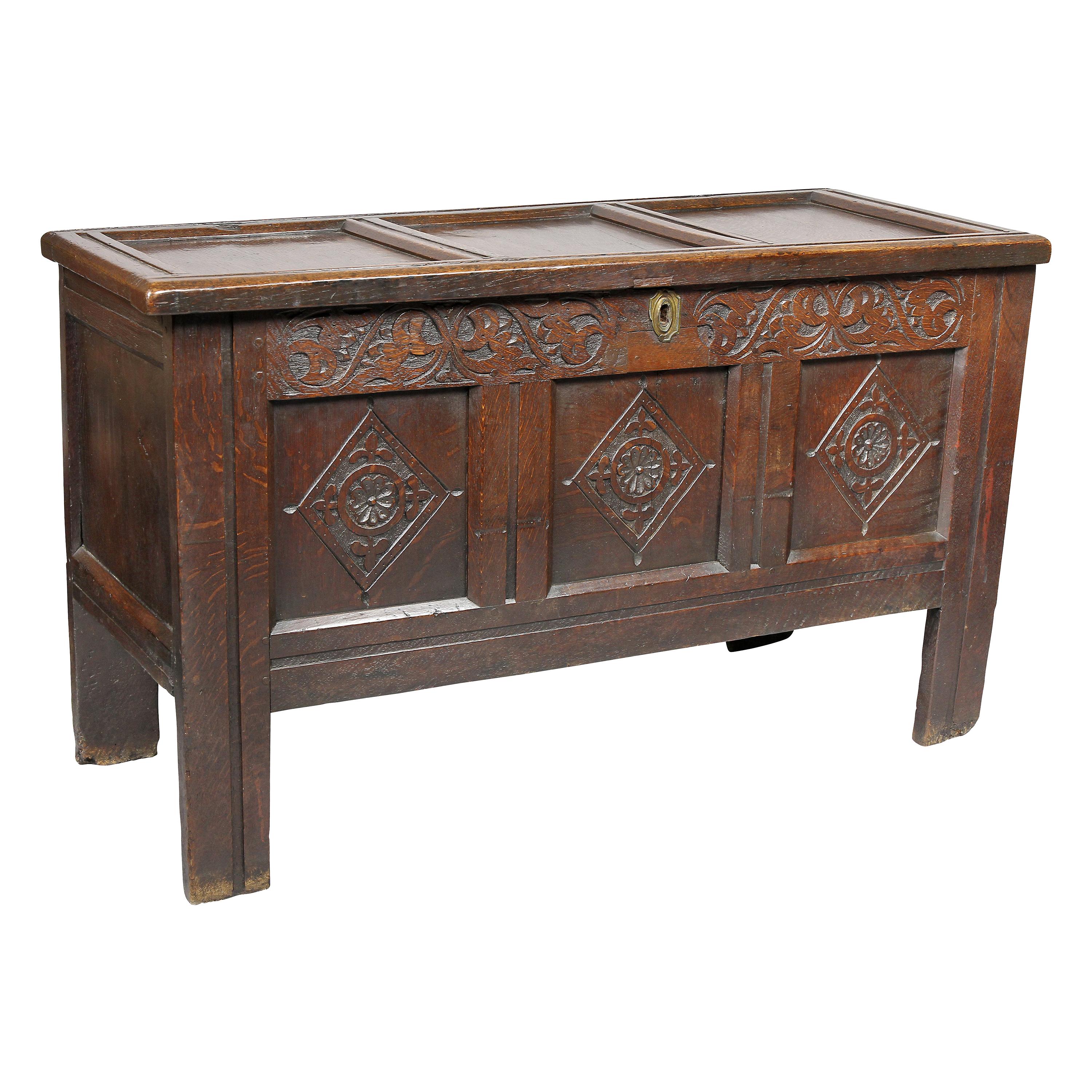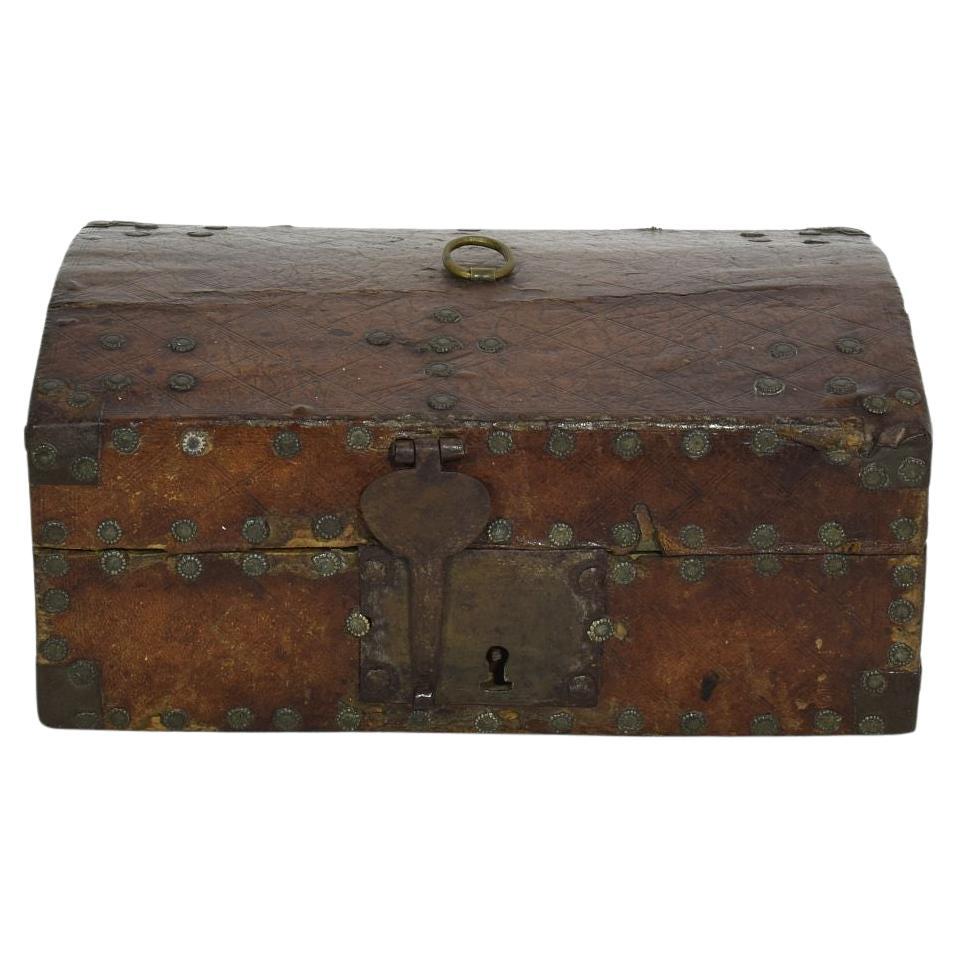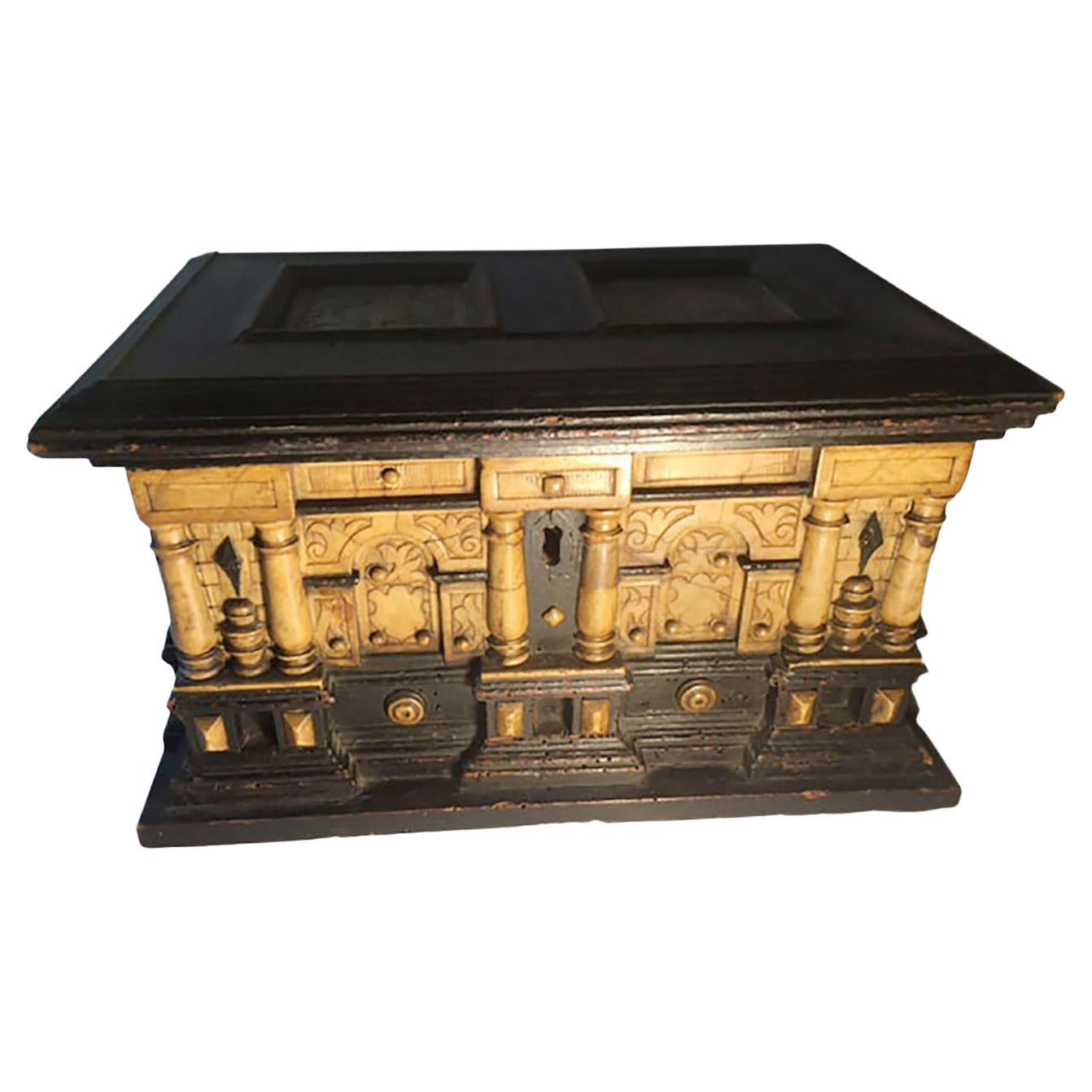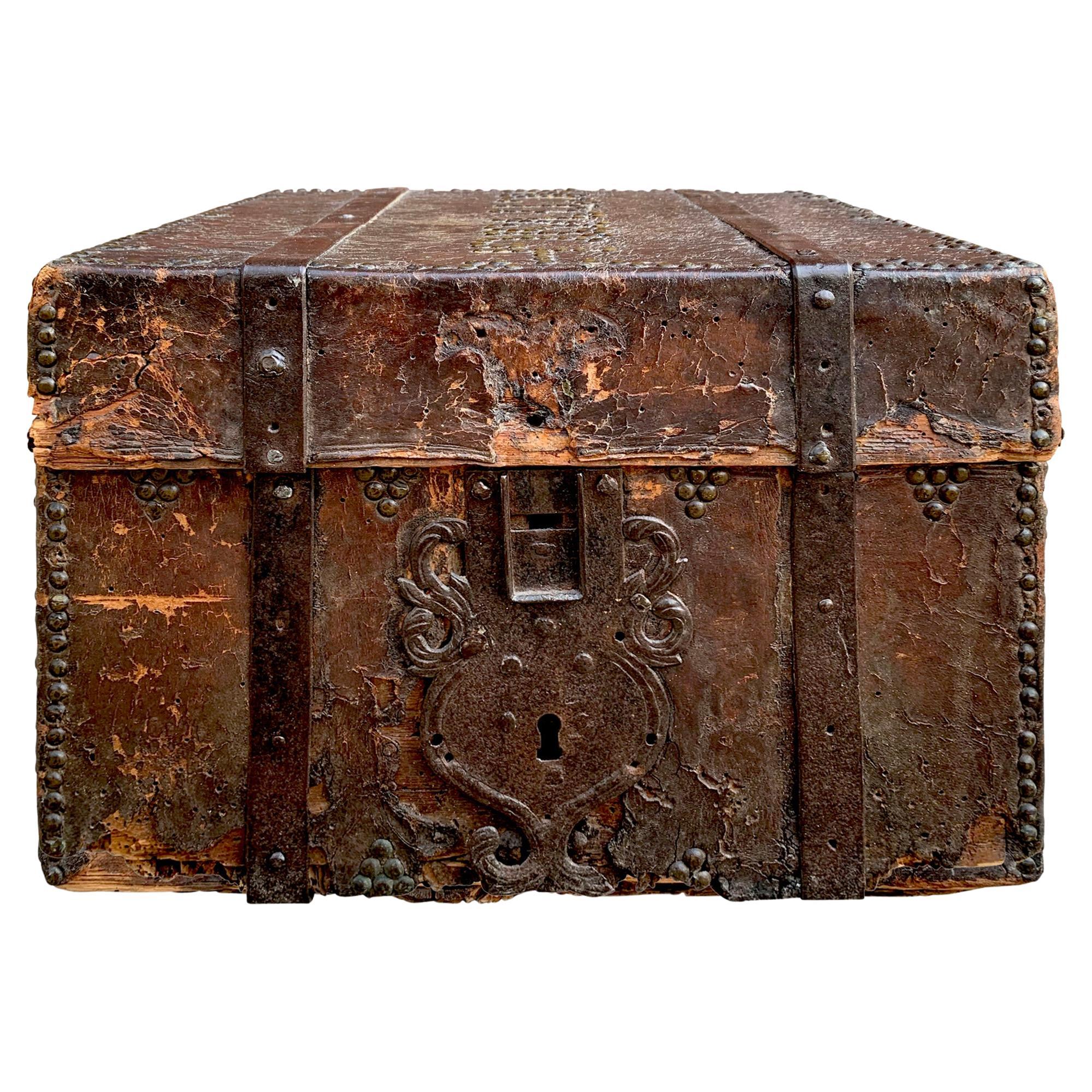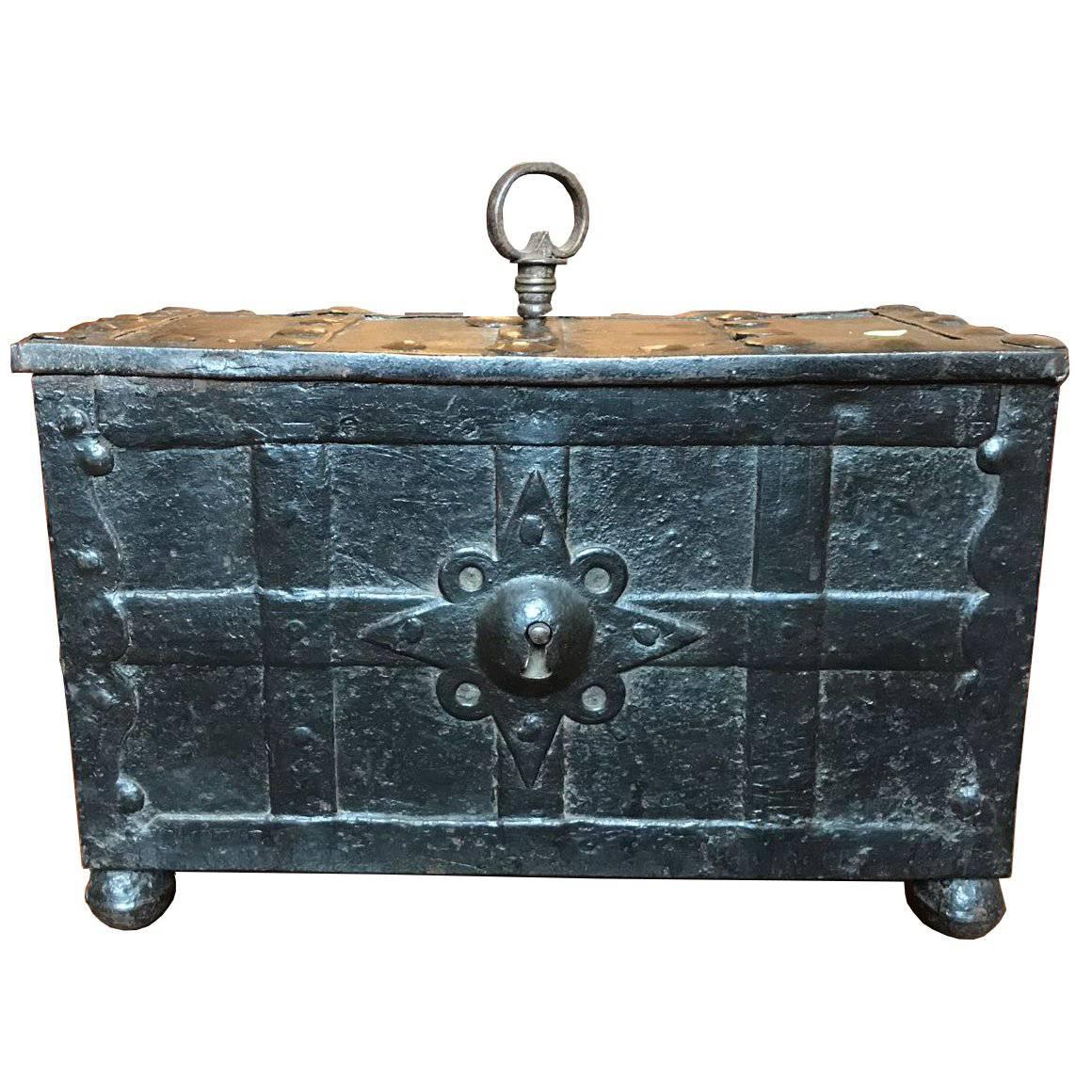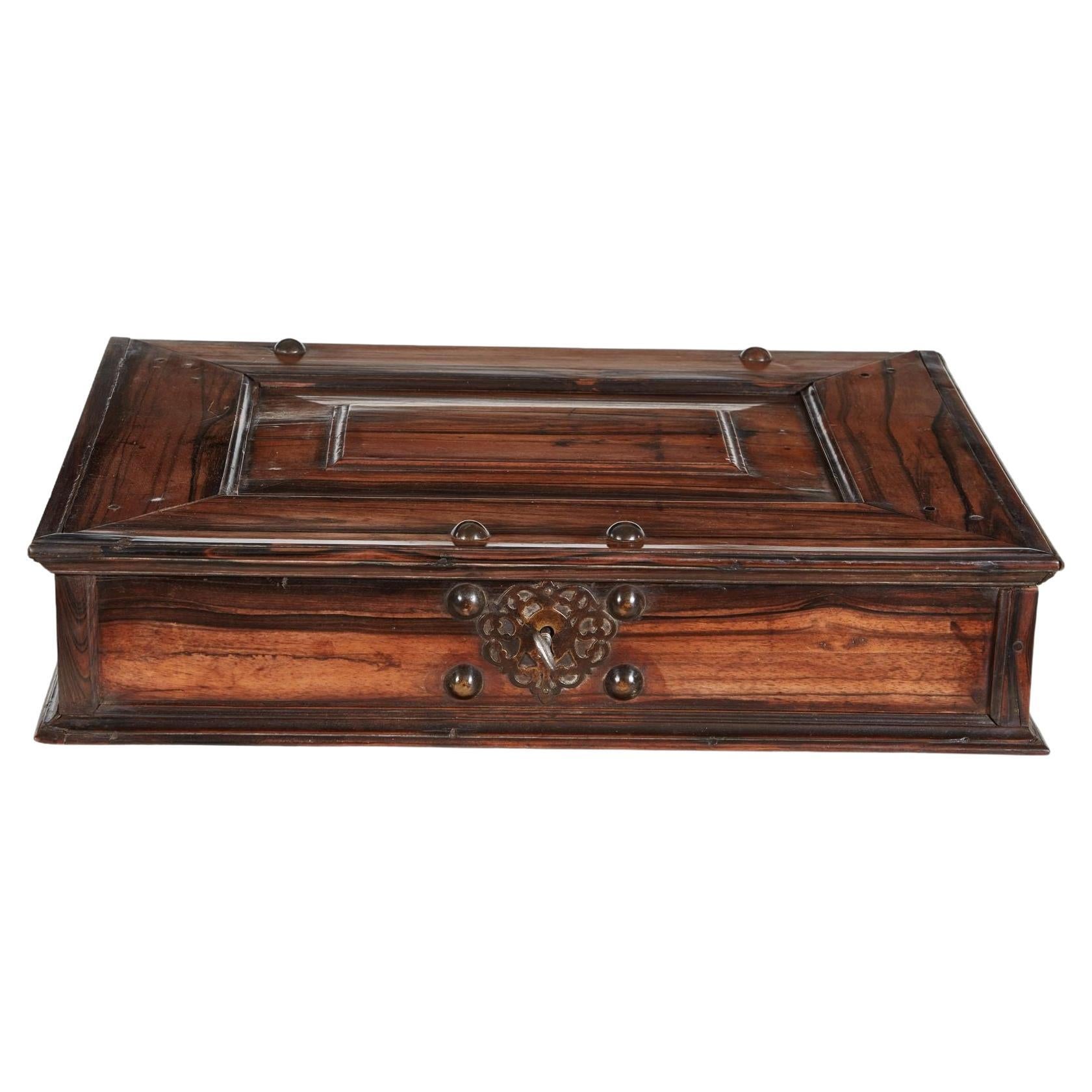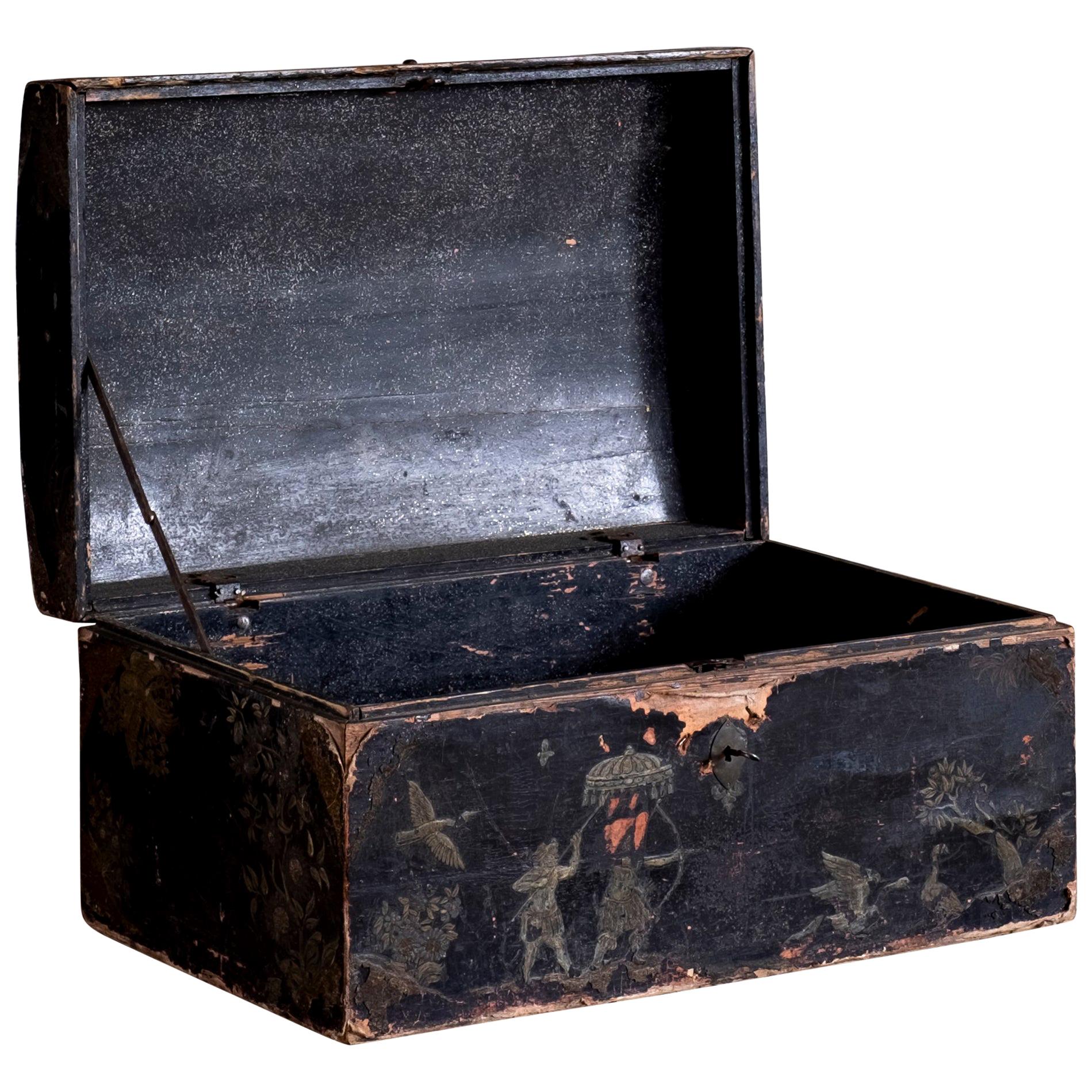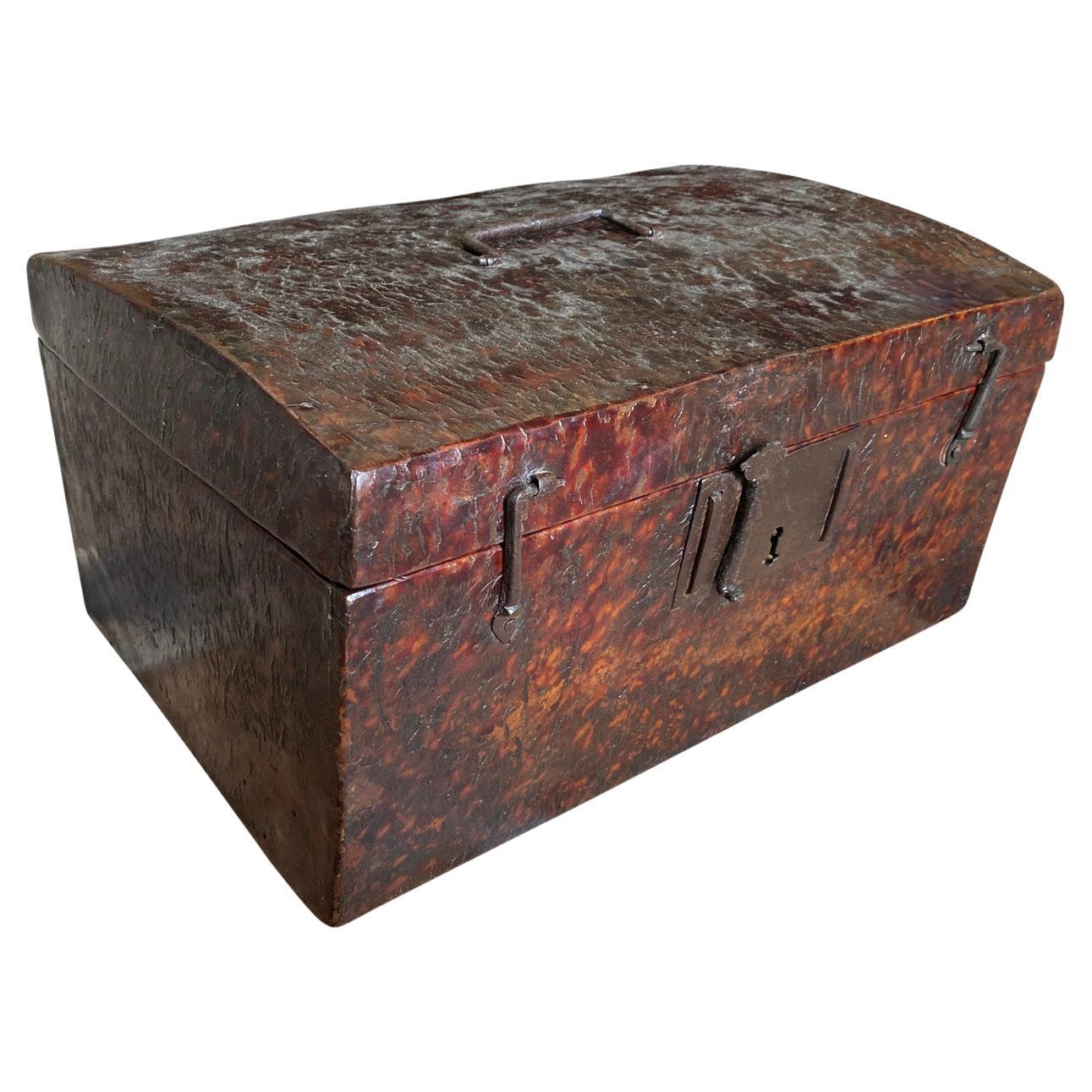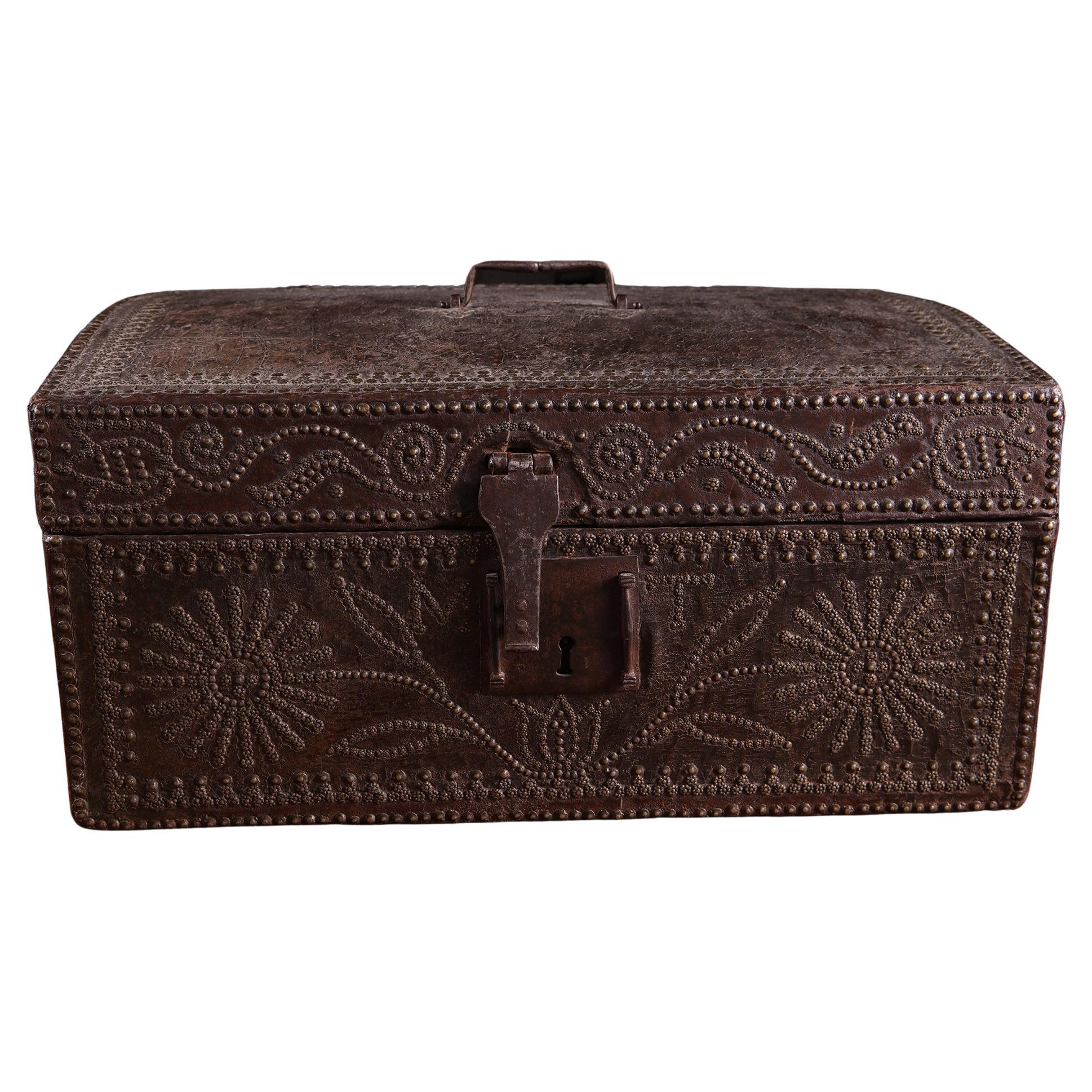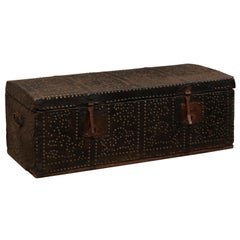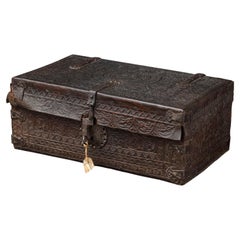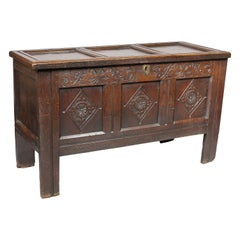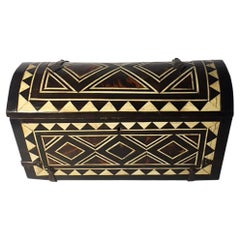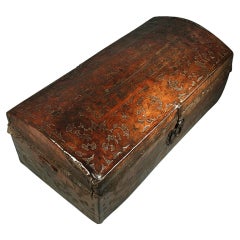
Rare 17th Century Spanish Colonial Hand Tooled Leather Coffer
View Similar Items
1 of 10
Rare 17th Century Spanish Colonial Hand Tooled Leather Coffer
About the Item
Dimensions: 41 inches long x 21 inches wide x 16 inches high.
In overall excellent condition.
**********************************************
About Us:
Specializing in Spanish colonial and Mexican folk art, Colonial Arts offers a unique collection that has been carefully hand selected for quality, craftsmanship, artistic merit and design. Our philosophy is based on basic principles of authenticity, condition, great service and a pride in the pieces we sell. Colonial Arts is a member of the Antique Dealers Association of California and the Antique Tribal Art Dealers Association. Each item in our catalogue is guaranteed to be authentic.
Colonial Arts started as a cyber enterprise 1998 and subsequently opened its first brick and mortar location on Union Street in San Francisco’s North Beach Neighborhood. Today Colonial Arts is situated in the San Francisco design center in a historic brick and timber building. The focus of the gallery continues to be high quality Spanish colonial and vintage folk art from Spain, Mexico and the Americas.
We encourage you to spend a moment, click the buttons, browse our extensive catalog, ask questions and discover the beauty and inspiration inherent in these rare art forms. Please bookmark this page. We are adding content, updating information, and posting new inventory frequently.
Please visit our website, www.colonialarts.com for more of our latest offerings.
**********************************************
Other available offerings and keyword:
Mexican lacquerware, Guatemalan textiles, Spanish table, coffer, Mexican trunk, Shipibo, reliquary, tribal rug, Cuzco school painting, bulto, sombrero, betel nut, serape, saltillo, Crucifix, Cristo, Chalice, Commode, Armoire, Chairs, Candlesticks, Candelabra, Spratling, coconut bank, crown, corona, bargueno, vargueno, nicho, madonna, virgin, columns, lusterware, hispano moresque, baroque, Cusco, Peruvian, mask, Mexico, santo, tribal rug, anatolian, bench, bed, bowl, plate, charger, tonala, tlaquepaque, religious, majolica, faience, pottery, tile, icon, Syrian, Persian, Mexico, Peru, Bolivia, ivory
- Dimensions:Height: 16 in (40.64 cm)Width: 41 in (104.14 cm)Depth: 21 in (53.34 cm)
- Materials and Techniques:
- Place of Origin:
- Period:
- Date of Manufacture:17th Century
- Condition:Excellent, original.
- Seller Location:San Francisco, CA
- Reference Number:1stDibs: U1203048476517
Authenticity Guarantee
In the unlikely event there’s an issue with an item’s authenticity, contact us within 1 year for a full refund. DetailsMoney-Back Guarantee
If your item is not as described, is damaged in transit, or does not arrive, contact us within 7 days for a full refund. Details24-Hour Cancellation
You have a 24-hour grace period in which to reconsider your purchase, with no questions asked.Vetted Professional Sellers
Our world-class sellers must adhere to strict standards for service and quality, maintaining the integrity of our listings.Price-Match Guarantee
If you find that a seller listed the same item for a lower price elsewhere, we’ll match it.Trusted Global Delivery
Our best-in-class carrier network provides specialized shipping options worldwide, including custom delivery.You May Also Like
Spanish Baroque Leather-Wrapped Coffer Adorn with Brass Accents, 18th Century
Located in Atlanta, GA
A Spanish Baroque leather-wrapped coffer brass accents from the 18th century. This antique Spanish coffer, with it's rectangular-shaped body, has been o...
Category
Antique 18th Century Spanish Baroque Blanket Chests
Materials
Leather, Wood
Boiled Leather Trunk, Spanish, 17th Century
Located in Bruxelles, BE
Leather trunk
Spanish, 17th century
Boiled Leather, wood and iron
Measures: 22 x 53 x 32 cm.
Provenance :
- collection Metz-Noblat, Château de Clevant, France
Rectangular trunk of the form and size of a small suitcase with wrought iron hinges and lock-plate.
Wood, covered with leather, cut and embossed with every surface of the thick cow hide covered in interlace, zoomorphic features.
The construction method is boiled leather, often referred to by its French translation cuir-bouilli: a process used to change flexible, vegetable-tanned leather into rigid, moulded objects. For shaping of the vegetable-tanned leather, heat and moisture were used, as indicated by the term boiled leather. No written medieval sources describing the production of decorated cuir bouilli objects survive, so knowledge of the process relies on the important studies of the Scottish leather historian John William Waterer. A large range of methods, materials and techniques could be used in various combinations. The vegetable-tanned leather, made supple with moisture and heat, was stuffed, shaped and nailed to the rigid wooden coffer support. The stuffing material was probably modeled beeswax or stearin wax. To shape the leather, to create its topography, « Cushions » were made by lacing a thread through an awl hole and attaching the flexible leather and stuffing to the rigid wooden support on the bottom. Then the decoration was done: lines were incised through the upper layer of the leather (epidermis) with different thicknesses of knives or needles. Contours were created with deep v-shaped cuts, decoration with thin incision and final details with a needle point. For the incision and pouncing stage, the leather was probably kept heated and moistened for suppleness.
Once dry, the leather would be hard and rigid.
the saturated leather is worked over a form, possibly even damp sand, with the pattern shaped using bone or wooden tools. Compare to metal, leather was lighter and it offered protection from cuts and punctures. Cuir bouilli objects were produced by specialist leather workers and needed skillful craftsmanship.
The surface is filled with roundels shaped foliages enclosing animals, lions and peacocks. The foliate arabesques creating a vegetal connection tweet the animals create the impression of a lush verdant space . The vegetal pattern here employed in combination with geometrical pattern came from the pre-islamic artistic traditions of the Byzantine and Sasanian empires. An aspect of Islamic geometry Is the basic symmetrical repetition and mirroring of the shapes that create a sense of harmony.
The decoration of this truck is inspired by the islamic « arabesque » a form of vegetal ornament composed of spirals, intertwining plants and abstract curvilinear motifs. An arabesque character is given to the birds of the decorations through extreme stylisation. This arabesque maintained the classical tradition of median symmetry, freedom in Detail and heterogeneity of ornament.
The presence of the peacocks is a paradisiacal allusion: in popular Islamic literature they were among the original inhabitants of the garden of Paradise expelled with Adam and Eve. Peacock as a decorative motif may have originated in the West, despite their eastern provenance. There was an ancient belief that the flesh and feathers of peacock do not decay. This led to the peacock becoming a christian symbol for Christ’s resurrection.
Renowned for their decorative wall hangings, seventeenth-century Spanish leatherworkers also produced utilitarian objects, such as this trunk. A similar trunk is on display at the Metropolitan museum of art ( 09.158.1).
Related literature :
Davies L. 2006. Cuir bouilli. Conservation of leather and related materials, 94-102, Oxford: elsevier Butterworth-Heinemann
Grabar, Oleg. The Mediation of Ornament. Princeton: Princeton University Press, 1992
Gabriela Germana Roquez, "El mueble en el Peru en el siglo XVIII...
Category
Antique 17th Century Decorative Boxes
Materials
Iron
Jacobean Oak Coffer
Located in Essex, MA
Nice small proportions with paneled hinged lid over a conforming case with three panels with carved detail, square section legs.
Category
Antique 1680s English Jacobean Blanket Chests
Materials
Oak
$2,950
17th-18th Century Spanish Colonial Box With Domed Top
Located in Dallas, TX
Spanish Colonial inlaid bone and faux tortoiseshell domed top box. Original hammered iron hinges. Circa 1680-1740. Excellent condition and very rare.
Category
Antique 1690s Spanish Decorative Boxes
Materials
Iron
Small 17th Century, French Coffer or Box in Leather
Located in Buisson, FR
Extremely old box that is covered with leather and metal decorations.
Rare find.
France, circa 1600-1700
Weathered and some losses.
Category
Antique 17th Century French Decorative Boxes
Materials
Leather, Wood
$912 Sale Price
49% Off
17th Century, Alabaster and Ebonised Wood Casket Malines Coffer
Located in Dallas, TX
A 17th century Malines alabaster and ebonised wood coffer or casket with engraved inset panels, arches and columns. The interior has a marbled paper lini...
Category
Antique 17th Century Belgian Decorative Boxes
Materials
Alabaster
Recently Viewed
View AllMore Ways To Browse
Mexican Bowl Wood
Antique Mexican Religious
Scan Design Chairs
White Baroque Chair
17th Century American Colonial
Black Timber Bench
Mexico Pottery Plate
Antique German Tile
Tooled Leather Mexican
Black Cedar Bench
Long School Bench
Mexican Saltillo
German Chalice
Antique Spanish Commode
Serape Blanket
18th Century Iron Bed
German Baroque Chairs
Iron Bed 18th
